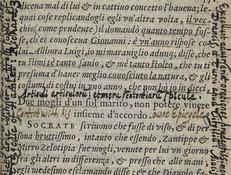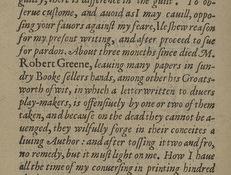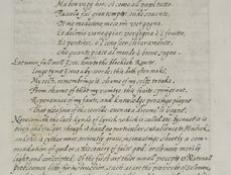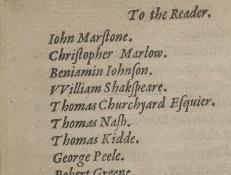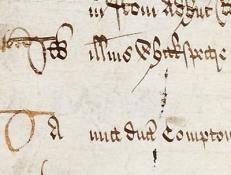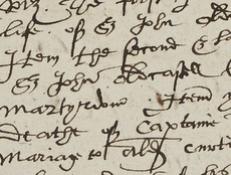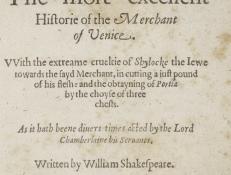To view a sortable list, please visit the Resource
All Documents
ca. 1580-1608?
The scholar and writer Gabriel Harvey was known and mocked in his lifetime for making copious notes in the margins of printed books. An inventor of words, friend of Edmund Spenser, and rival of Thomas Nashe, he constantly sought to improve himself through note-taking and repetitive reading.
1592
SHAKESPEARE DOCUMENTED IS STILL GROWING! Descriptive content and transcriptions will continue to be added, updated and expanded. Check back for regular updates!
ca. 1599
William Scott’s The Modell of Poesye, a treatise on poetics, includes the earliest literary criticism of Shakespeare. Although Shakespeare is not mentioned by name in the manuscript, two of his works are.
1600
SHAKESPEARE DOCUMENTED IS STILL GROWING! Descriptive content and transcriptions will continue to be added, updated and expanded. Check back for regular updates!
1600
Like other plays from the period, Shakespeare's plays were meant to be read both as stories and as sources for sententiae, or memorable aphorisms.
October 6, 1600
Lay subsidies were a type of tax based on personal wealth. In London, the collection of subsidies was managed at the local level of ward and parish.
August 11 and 14, 1600
Sir John Oldcastle was entered into Liber C of the Stationers' Company on August 11, 1600.
1600
SHAKESPEARE DOCUMENTED IS STILL GROWING! Descriptive content and transcriptions will continue to be added, updated and expanded. Check back for regular updates!
August 4, 1600
On August 4, 1600, Henry V, Much Ado About Nothing, and As You Like It (along with a fourth play not authored by Shakespeare, Every Man in His Humor) were noted on the flyleaf of Liber C of the Stationer's Company.
1600
This is the second edition of Titus Andronicus, printed in 1600 by James Roberts for Edward White. John Danter registered the play and printed the first edition in 1594, for White and Thomas Millington.

